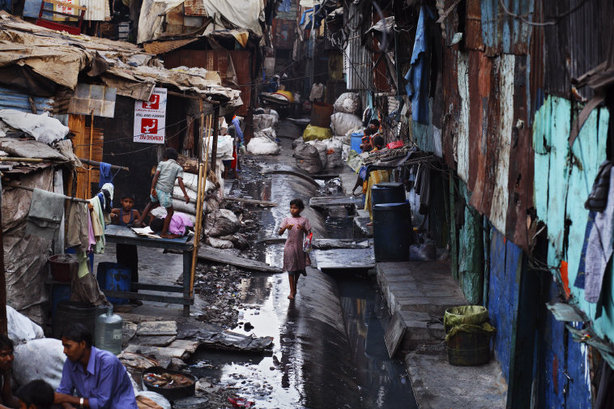
On Tuesday, November 18, Slate featured pictures by photographer Jonas Bendiksen in "Today's Pictures."
The blurb about Bendiksen on Slate describes his work: "Between 2005 and 2007, photographer Jonas Bendiksen spent many months in the slums of Nairobi, Kenya; Mumbai, India; Jakarta, Indonesia; and Caracas, Venezuela, studying the daily lives of their occupants. The neighborhoods pictured in the book and exhibition of the same name (on view at the Nobel Peace Center in Oslo, Norway) are some of the most densely populated places on earth. Cramped homes, often just a single room, provide little privacy yet contain complete domestic universes—everything a family owns. The book is a collection of voices and reflections on living in the world's fastest-growing human habitats—the slums."
Like much of the best art out there, Bendiksen's photographs find beauty in the forgotten places of the world. His lens transforms an empoverished landscape, like this slum in Mumbai, into a startlingly vibrant patchwork of color. The water pipe running down the center of the photograph provides balance and symmetry; the path the girl follows grows dim in the distance, but the viewer can see it continuing on through the stands and aside the wreckage.

This next photograph, of the Kibera slum in Nairobi, also takes an industrial fixture -- this time not a water pipe, but a railroad -- as its visual focal point. It is nighttime here, but light glimmers off of the wet ground, and passersby with their bright umbrellas provides specks of color against the blue-black night.
Do Bendiksen's photographs exoticize poverty? In turning urban blights into poetic expressions with the help of his camera lens, does the photographer minimize the tragedy of the scenes he's depicting? An alternative point of view would be to say that drawing the Western world's attention to forgotten slums in huge, developing cities in places like Kenya and India is a service, no matter what.
Recent comments
2 years 29 weeks ago
2 years 44 weeks ago
2 years 44 weeks ago
2 years 50 weeks ago
3 years 4 weeks ago
3 years 4 weeks ago
3 years 4 weeks ago
3 years 6 weeks ago
3 years 6 weeks ago
3 years 6 weeks ago